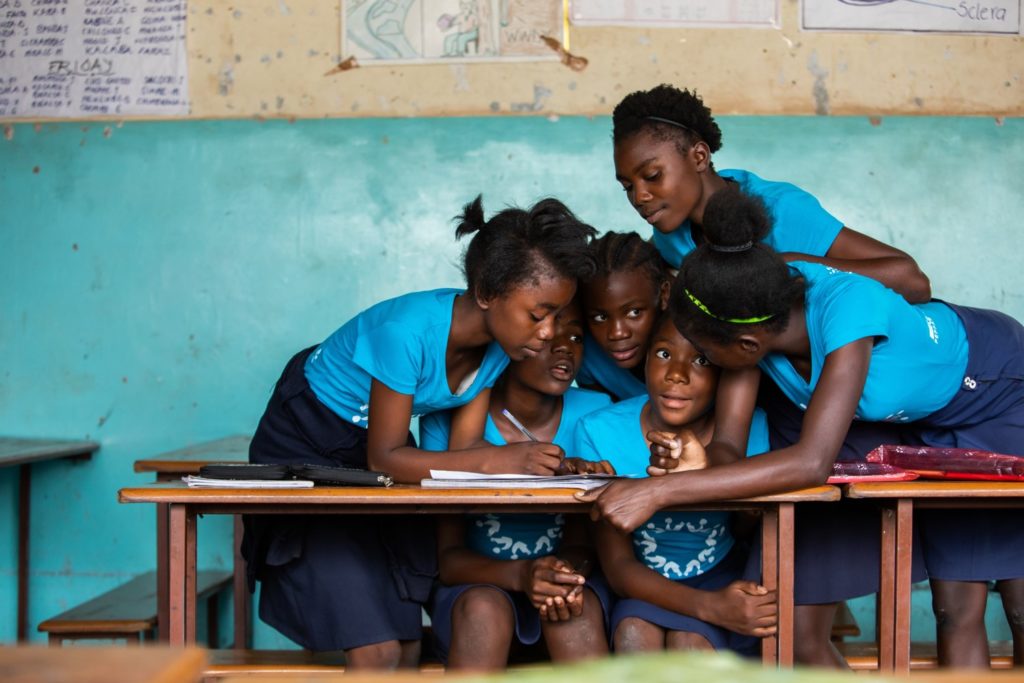What the COVID-19 pandemic is showing us about the global learning crisis
May 10, 2021

Progress in girls’ education has been faltering for years. For decades, the global education system has not been educating the majority of its children adequately, largely because we have failed to connect how policies and programs can leverage data and evidence to reduce inequalities and get all children in school and learning. In low-income and lower middle-income countries, up to one in five children are not in primary school—including six million more girls than boys. And globally, more than half—56 percent—of children are unable to meet minimum proficiency standards in reading and math, with rates far higher—90 percent—for girls in sub-Saharan Africa.
Today, however, the COVID-19 pandemic is amplifying this crisis. While the full educational repercussions of the pandemic are just beginning to unfold, an additional eleven million primary and secondary students are projected to drop out of school due to COVID-19. Even before the pandemic, 53 percent of primary students suffered from learning poverty—either not in school or below the minimum proficiency level in reading—but the COVID-19 pandemic is projected to drive an additional 10 percent into learning poverty.
COVID-19’s impact is not equally distributed. Instead, it is hitting those who are already at greater disadvantage hardest, including girls living in poverty. More than ever, we need to make sure investments are effective, smartly targeted, and driven by a lens of equity and justice. To ensure that the millions of girls at risk of dropping out are back in school and learning, we need better alignment and coordination among researchers, practitioners, advocates, donors, and policymakers.
That’s why the GIRL Center created the 2021 Girls’ Education Roadmap. In a first-of-its-kind report, Population Council researchers reviewed who’s doing what, what’s working where, and what the biggest needs facing girls are. The Roadmap links education indicators with other structural drivers, because barriers to schooling, especially for girls, often lie outside the education sector. For instance, we examine low levels of attainment and literacy as they intersect with poverty, violence, and child marriage. The Roadmap brings together three bodies of data that are critical to pave the way forward—the needs, evidence, and practice in global girls’ education.
Our evaluation of needs, evidence, and practice finds a diverse and vibrant ecosystem of programs and research, but also discloses striking gaps. For example, although child marriage and early childbearing play a direct role in school dropout for girls, and often occur closely together, only 22 percent of mapped gender and education programs focus on one or both of these barriers. Similarly, evidence is lacking on some of the most commonly used approaches in the field, often because we have not conducted research in settings with highest need, or not designed studies to tease out whether and how these approaches can be most effective for improving education—especially learning—outcomes.
COVID-19 did not create the learning crisis, nor did it create inequality in access to education, but it has laid bare the failures of the education system to address gender-related barriers to schooling and challenges us, urgently, to do better. Doing so requires critical examination of these gaps and greater accountability for addressing them. We need to ensure that government and donor policies are guided by rigorous evidence on what works, for whom, and in which settings.
While our goals are shared, this is not a one-size-fits-all endeavor. As schools shuttered by COVID-19 reopen, children need to get back to school and build back their literacy and numeracy skills. The Population Council’s ongoing COVID-19 studies show how the pandemic has exacerbated pre-existing vulnerabilities and disparities that are distinct from one setting to the next. Before school closures in Kenya, over half of adolescents (59 percent) had received at least one meal a day at school. Due to COVID-19, three out of four adolescents in most study sites reported skipping meals: 78 percent in Nairobi, 79 percent in Kisumu, 76 percent in Kilifi, and 55 percent in Wajir. As Kenyan schools re-open, 16 percent of girls and 8 percent of boys did not re-enroll. The main reasons for drop out are school fees (reported by 47 percent of girls and 21 percent of boys) followed by pregnancy (10 percent) for girls and work (14 percent) for boys.
What can we do to prevent declines in learning and exacerbation of disparities? We know that addressing financial barriers to schooling through tuition and fee waivers or through cash transfers increases enrollment and attainment, as does providing food in school or take-home rations. These proven interventions map directly on the needs we see in Kenya and elsewhere. Similarly, in every country across the globe, we are all asking how we can support teachers to meet the learning needs of returning students—needs that are likely more diverse than ever given uneven and sometimes non-existent remote learning during the pandemic. For example, while most Kenyan girls reported learning from home, the most common method reported (57 percent) was reading books not provided by school. These needs—and solutions—differ by gender, setting, and socioeconomic status, but again, we know a bit already about what can address learning loss. For example, matching teaching to students’ learning levels and providing academic support boost learning outcomes. We don’t need to guess what might work.
The pandemic has laid bare the enormity of the global learning crisis. It’s on us to step up and fix it.
This blog was first published on the Women Around the World Blog on the Council on Foreign Relations website.

 Nicole Haberland
Nicole Haberland Timothy Abuya
Timothy Abuya